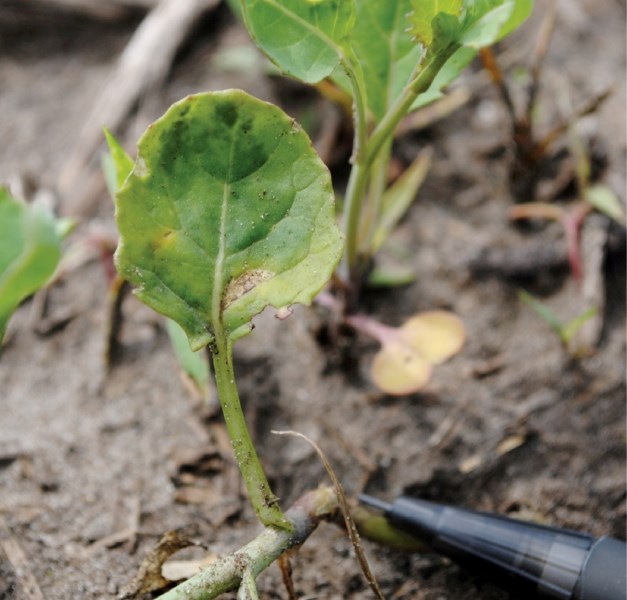Farmers in Western Canada have been experiencing wet and cool summers for the last few years and it’s bringing about concerns of Blackleg.
Canola is at the highest risk for Blackleg, a dry rot disease that causes stem girdling, a blackening and hardening of a canola stem, which can cause major yield loss by killing or damaging infected plants.
“Farmers should really be checking their fields on a regular basis,” said Harry Brook, crop specialist at the Ag Info Centre with Alberta Agriculture and Rural Development. “The reason it’s an elevated concern is producers are shortening their crop rotations.”
Trends in yield and economic return suggest canola should not be grown more than one year in three, yet some are growing the cash crop one in two years or even back to back.
“On top of that, we have some new strains (of Blackleg), showing up that are overcoming the resistance that we’ve bred with our regular crops,” said Brook.
Farmers should be wary of other canola-related diseases that can crop up if rotations are shortened, such as Sclerotinia, another wet-weather, humidity thriving fungus.
Glen Forster, a technical specialist with BASF Global, a chemical company, offers these tips to growers to avoid Blackleg:
• Inspect your crop regularly: Fields with the greatest risk for Blackleg are those where there has been a yield loss as a result of Blackleg in previous years and varieties with lower Blackleg disease ratings are grown under short rotations. Early symptoms of Blackleg appear as lesions on cotyledons and the first true leaves. Lesions are round or irregular, often dotted with numerous black pycnidia – as they mature they become greyish in colour and form on the stem.
• Exercise good crop management: Blackleg inoculum overwinters in crop residues and will be more prevalent where canola is seeded under tight rotations. Growers should use sound crop rotation as well as rotate canola varieties to help manage Blackleg inoculum levels on a farm.
• Apply fungicides preventively: Fungicides should be used preventively before symptoms appear, effectively stopping the disease before it starts. These products can be applied at herbicide timing before the appearance of Blackleg disease symptoms.
• Keep your crop healthy: When plants are not challenged by disease, they are able to grow more efficiently and tolerate short periods of cold, heat and drought.
• Beware of other diseases: Blackleg is only part of the issue; Sclerotinia is an important canola disease that thrives in wet conditions. An early season application to control Blackleg followed by an application of a registered fungicide at the 20 to 50 per cent bloom stage to control Sclerotinia will provide the best possible protection for canola crops.
For more information on Blackleg, visit www.agric.gov.ab.ca


